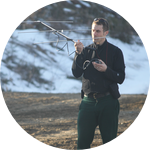Haven't backed any projects yet!
Spring 2018 snowshoe hare pellet plot surveys completed!
We began snowshoe hare pellet plot surveys on May 1st and ended on the 24th. It was by far our fastest season! We had plenty of help along the way and were blessed with dry and cool weather. We sur...
Our first week back
You might think it's spring until you hike up into the mountains. Sam began the week by checking cameras in the northern Whites and he encountered 145 cm of snow at a couple of our sites. It was so...
Cold and snowy start
Happy April 17th!! Just thought we'd let you know that we plan to start checking cameras this week. The weather has been pretty cold and there is still quite a bit of snow on the ground, especially...
New sites = more lynx!
We made a big push last fall to increase our sample size of cameras and now have about 250 in New Hampshire and Vermont. One of the main objectives was to increase coverage in the northern part of ...
Krummholz and waves for hares?
Snowshoe hares are typically more abundant in young forest dominated by evergreen trees (i.e., needle-like leaves that remain on the tree year round), especially in eastern North America. These for...
Snowshoe hare capture and radio-collaring
We started tracking individual snowshoe hares at high and low elevation sites back in the summer of 2016. We wanted to get a better idea of their population size and the reliability of our field me...
Counting hares by counting their poop?!
Yes! Many researchers have used the pellet plot method (i.e., counting poop) as a way to evaluate the population size or density of an animal. This approach has been used across the geographic rang...
